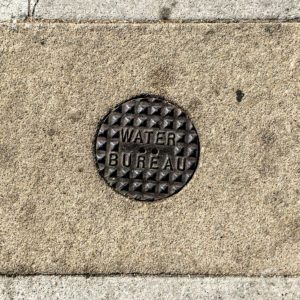The Stream, November 19, 2019: Many Native Americans Lack Adequate Water Supply, Study Finds
The Global Rundown
A new report shows that Native Americans struggle most with water accessibility among all groups in the United States. A third major hide tide in a week swamps Venice, Italy. Amid chronic electricity shortages, Yemenis boost water supply through solar energy. California edges toward another drought. Farmers in Canada grapple with a fourth year of poor harvests.
“Too many more years like this and farmers here might not survive.” –Clarence Zeleny, a farmer in Alberta, Canada, in reference to unfavorable conditions for Canadian cropland in recent years. Many agricultural areas of the country, which supply much of the world’s canola seed and wheat, are enduring their fourth bad harvest in a row. This year, too much rain and snow are behind the poor harvest, while a trade war with China is worsening the industry’s woes. The Guardian
Latest WaterNews from Circle of Blue
What’s Up With Water – November 18, 2019 — This week’s edition of What’s Up With Water includes coverage on thousands of hazardous dams in the United States, discolored water in Cleveland, Ohio, and how water connects climate to health.
HotSpots H2O: Bushfires Raze Parts of Eastern Australia as Government Quarrels over Climate Change — Devastating wildfires are sweeping across large swathes of Australia’s drought-stricken eastern coast, heralding what is likely to be a long and unforgiving bushfire season.
By The Numbers
2 million Americans who live without a steady supply of running water, according to a new report called “Closing the Water Access Gap in the United States.” Native Americans are the most likely to have water accessibility issues, the study found, with an estimated 58 out of every 1,000 Native American households lacking plumbing. For white households, the proportion is 3 out of every 1,000. NPR
1.5 meters (4.9 feet) Height of Venice’s peak tide on Sunday, marking the third exceptional flood within a week. The city, which declared a state of emergency last week, is experiencing its worst flooding in more than 50 years. Experts say rising sea levels and a gradual sinking of the city are likely to blame. Deutsche Welle
Science, Studies, and Reports
Electricity and fuel shortages have hampered Yemen since its civil war began, oftentimes limiting the ability to operate water pumps. Solar energy is becoming more common across the country, however, boosting electricity and water supply for thousands of residents. Reuters
On the Radar
Eighty-one percent of California is currently experiencing “abnormally dry” conditions, with an additional 4 percent undergoing “moderate drought,” according to the latest update by the U.S. Drought Monitor. The dry conditions are an abrupt shift from the previous update, when only 18 percent of the state was “abnormally dry.” Reservoir levels in the state remain strong, but other indicators such as precipitation deficits and vegetation health are responsible for the Drought Monitor’s latest assessment. Sacramento Bee
Kayla Ritter is a recent graduate of Michigan State University, where she studied International Relations and Teaching English to Speakers of Other Languages. She is currently based in Manton, Michigan. Kayla enjoys running, writing, and traveling. Contact Kayla Ritter






Thanks for sharing.